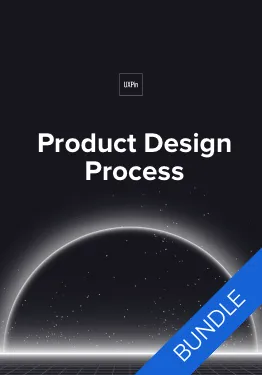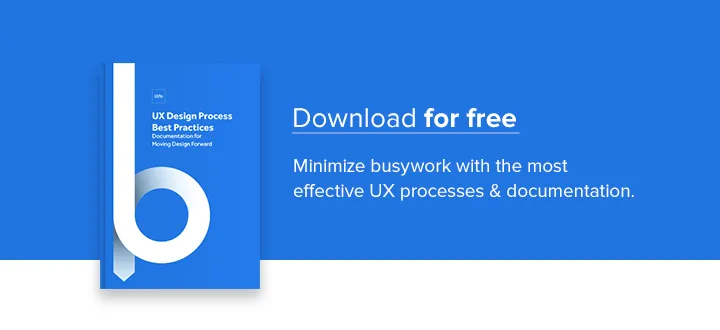“So who are we designing for?”
That should be the first question of every single project.
It should be followed by, “What are their motivations?” or “What are their goals?” If you don’t know who you’re designing for, wireframing is a waste of time. I was once at fault: I would start projects without doing user research because I never thought there was time. After a few failed projects and wasted hours, I started every new project with at least some research so I could understand the target audience.
There is always time. Understanding your audience is essential to building great products.
One cost-effective approach of modeling your audience is personas. Personas are user models derived from data to solve design questions. They are not new (my apologies to Alan Cooper), but are a derivative of market research with origins in the 1920’s. Personas are valuable, but are biased because they are based on assumptions and data selected by error-prone humans.
Well constructed personas work because they are a starting point to define the users the product owners should identify with. They narrow the design focus and generate questions like “How would much value would this persona have for this product?”
Even at the beginning of the project, you can construct provisional personas because having something is better than having nothing.
If you need help with persona templates, UX Booth has a really good guide. Super User Friendly’s is super cool. Usability.gov also has a great list of suggestions on how to create personas.
Pitch the client or your boss on spending some time performing customer visits. Once you have your personas built out, most smart product owners will understand their value and will want to put more time into understanding their users.
Even without access to your users, you can still build lightweight personas. Here’s a few approaches.
Table of Contents
1. Ask the client
A friend of mine recently designed a website for a wine maker. The initial assumption was that there would be a certain market segment of end customers that the wine maker would want to sell to.
The answer from client surprised him: the wine maker wanted to market to retailers that would be interested in carrying the wine in their stores, not to customers that would buy the wine online. While that significantly narrowed the audience, it dramatically changed to website approach.

With the client’s help, he was able to develop content and branding that had a laser focus on the audience.
Some clients have a pretty good idea of who they want as their customers, and you can tailor your personas that way. Understanding what they want out of the site or the application is a good starting point. It also helps you understand your client’s needs, and you may able to educate them about personas they should be considering.
However, most clients can’t answer this question clearly (or the answer is “everyone”).
2. Use Wikipedia
One project I worked on was the Municipality of Anchorage website.
There was a budget for doing user research, but flying a team of consultants to Alaska from Los Angeles was an expensive proposition. We had to build provisional personas before the first customer visit.

We used Wikipedia and other websites that contained data about the city. The government workers provided research performed by another firm about website needs. While it’s not perfect, most Wikipedia pages contain enough data that you can infer a lot about a place without visiting. In addition to the research, we validated our assumptions with stakeholders and by talking to residents informally.
Things about Anchorage that would surprise you:
- Anchorage is a college town. Roughly 25,000 students, or 10 percent of the population, go to four year schools.
- Ted Stevens International Airport is the third busiest freight airport in the world. Over 95 percent of the freight bound for Alaska is routed through Anchorage. Most of the air shipments that go through Alaska leave Anchorage because it’s a major refueling stop between the U.S. and Asia.
- It’s all about the government and natural resources like petroleum. Flights to and from Anchorage are full of oil workers — something you learn just by being on the flight there and back.
- Visitors from outside of Alaska use the city website. We determined from website traffic that many website users were potential visitors that wanted to learn about the city.
We found that many people also move to Anchorage because it’s either a lifestyle choice or they’re assigned there to work (for example, there’s several armed forces bases in the region). We used all this data to develop personas that included needs for visitors, business owners and residents, and made recommendations on content strategy that the city employees followed.
All these additional resources increased the value of the website for very targeted audiences. The personas were determined early on through research without talking to a single user, gave us a head start on redesigning the site.
3. Get out of the building
Sometimes all you need is three personas to get the conversations about customers started.
If you’ve attended my presentations, you’ll know that I bring up Bob The Chiropractor as a great example of a website where we did a lot of guerrilla user research to figure out what he needed in a site. The budget for my time was several beers.
Bob Benaderet is an online marketer that happens to be a chiropractor, and his business approach reflects that. He didn’t want advertise in the Yellow Pages — studies have show the return on investment is terrible when compared to online advertising — so most of his advertising is digital. The website and social media strategy were key to his business.
We spent time driving around the neighborhood and talking to local residents. We learned that many of his potential customers lived in apartments and talked a lot to their neighbors, didn’t have comprehensive health insurance, and needed immediate access to care.
We modeled goals on a few lightweight personas:
- Make the customers feel comfortable: Chiropractic services we’re explained in plain English.
- Build a low-cost price structure: Many potential patients couldn’t afford medical care and were looking for a low cost solution.
- Emphasize the relationship: While one persona was about the quick fix, another persona was about a long term relationship with a caregiver.
- Keep the local feel: Residents live in Long Beach because they have pride in their community.
The strategy worked — his website converts at a 12 to 14 percent rate, unheard of in website marketing. It has done so for the last five years. He’s years ahead of his business goals because he understands his customers, and has build a very loyal base.







